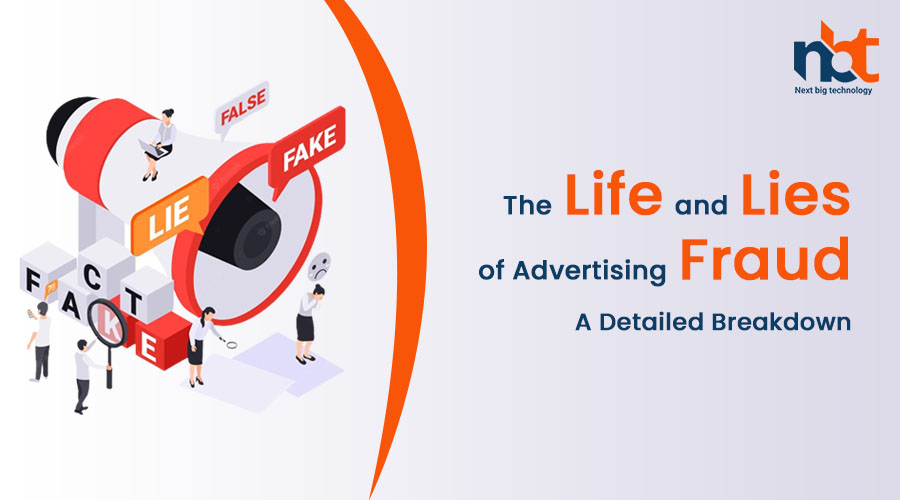Introduction: Advertising fraud has become a significant concern in the digital marketing landscape, impacting businesses, advertisers, and consumers alike. As technology advances, so do the methods employed by fraudsters to deceive and manipulate the advertising ecosystem. In this blog, we will provide a detailed breakdown of advertising fraud, exploring its various forms, the impact it has on the industry, and strategies to combat this pervasive issue.
- Understanding Advertising Fraud: a) Click Fraud: Click fraud involves fraudulent clicks on online ads, artificially inflating click-through rates (CTRs) and costing advertisers money for non-genuine clicks. Fraudsters may employ bots, scripts, or even pay individuals to click on ads, misleading advertisers into believing that their ads are generating genuine user interest.
b) Impression Fraud: Impression fraud occurs when ads are displayed to non-human entities or in non-viewable areas of a webpage. Fraudsters use techniques such as ad stacking, hidden ads, or pixel stuffing to create the illusion of ad impressions without genuine user engagement.
c) Conversion Fraud: Conversion fraud refers to the falsification of conversion data, where fraudsters generate fake leads, downloads, or purchases to deceive advertisers into paying for non-existent conversions. This type of fraud can severely impact advertisers’ return on investment (ROI) and distort campaign performance metrics.
d) Ad Injection: Ad injection occurs when unauthorized ads are injected into websites or mobile apps without the publisher’s knowledge or consent. These injected ads often compete with legitimate ads, diverting revenue from publishers and degrading the user experience.
- Impact of Advertising Fraud: a) Financial Losses: Advertising fraud costs businesses billions of dollars annually. Advertisers pay for fraudulent clicks, impressions, or conversions, leading to wasted ad budgets and diminished ROI. Additionally, businesses may suffer reputational damage when their ads appear on fraudulent websites or in inappropriate contexts.
b) Distorted Analytics: Advertising fraud skews performance metrics, making it challenging for advertisers to accurately assess the effectiveness of their campaigns. Misleading data hampers decision-making, impedes optimization efforts, and may lead to misallocated resources.
c) User Experience Degradation: Fraudulent ads can disrupt the user experience, leading to decreased trust in online advertising. Intrusive or irrelevant ads can drive users to ad-blockers, negatively impacting legitimate publishers’ revenue streams.
- Strategies to Combat Advertising Fraud: a) Ad Fraud Detection Tools: Utilize ad fraud detection tools and technologies to monitor traffic quality, identify suspicious patterns, and block fraudulent activities. These tools employ machine learning algorithms and behavioral analysis to detect and prevent fraudulent clicks, impressions, and conversions.
b) Implement Ad Verification Measures: Implement ad verification solutions that verify the legitimacy and quality of ad placements. These measures include pre-bid ad verification, post-bid verification, and ad viewability tracking to ensure ads are displayed to genuine users in appropriate contexts.
c) Transparency and Brand Safety: Work with reputable advertising networks, publishers, and ad exchanges that prioritize transparency and brand safety. Choose partners that follow industry best practices, maintain strict quality standards, and offer transparent reporting to ensure your ads are placed in reputable and brand-safe environments.
d) Fraud Monitoring and Reporting: Establish a system for continuous monitoring and reporting of ad fraud incidents. Regularly review campaign performance metrics, analyze traffic sources, and collaborate with industry initiatives and organizations to share information and combat fraud collectively.
e) Educate and Stay Updated: Stay informed about the latest fraud techniques, industry trends, and best practices. Educate your team on the signs of advertising fraud and encourage a proactive approach to combatting fraud.
Conclusion: Advertising fraud poses significant challenges to the digital advertising ecosystem. Understanding the various forms of advertising fraud, its impact on businesses, and the strategies to combat it is crucial for advertisers and industry stakeholders. By leveraging advanced technologies, implementing ad verification measures, prioritizing transparency and brand safety, and staying informed about the evolving fraud landscape, businesses can mitigate the risks associated with advertising fraud, protect their ad investments, and ensure a more trustworthy and effective digital advertising environment.


















